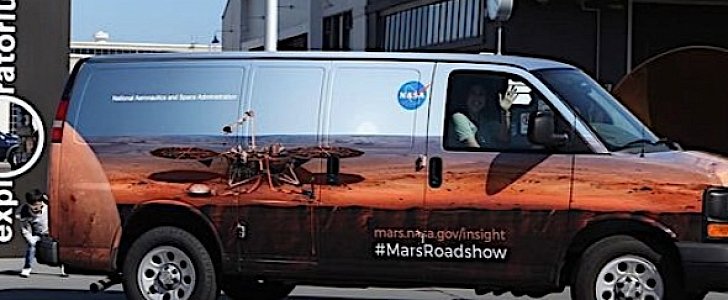On May 5, NASA’s latest mission to Mars, InSight, took off from the Vandenberg Air Force Base. It was the first interplanetary launch from the American West Coast.
To celebrate the moment, NASA kicked off in the weeks preceding the launch the so-called Mars InSight Roadshow, a caravan meant to detail the whys and hows of the mission to the Californian public.
So far, the caravan stopped at locations spanning from the Turtle Bay Exploration Park in the North and to Los Angeles in the South. And more locations are coming, NASA announced on Tuesday.
With the mission now well underway, NASA is planning to bring the Roadshow to Santa Ana, Pasadena, and San Diego in the weeks to come.
Visitors to the venues where NASA would present the mission will be able to talk with the scientists and engineers that created InSight, explore the interior of the Red Planet via models, and even see panoramas of Earth’s sister planet through virtual reality headsets.
NASA chose California for the launch and tour partly because of its seismic history. The tools which would land on Mars on November 26 (an ultra-sensitive seismometer and a heat-flow probe, among others) are meant to study Mars' deep interior to understand its seismology and geophysics.
NASA’s scientists will take advantage of the tour and try to make comparisons between earthquakes and marsquakes.
“The Roadshow brings family-friendly science activities, exhibits and public talks to communities throughout California, making comparisons between earthquakes and the marsquakes that InSight will try to detect,” said NASA in a statement.
The immobile instrument platform called InSight was built back in 2010 and was initially planned to travel to Mars in 2016. Because of a failure to one of the instruments, the launch was canceled.
Accompanying the InSight is a pair of mini-satellites from the CubeSat family, which will be used to track and follow the lander through space.
So far, the caravan stopped at locations spanning from the Turtle Bay Exploration Park in the North and to Los Angeles in the South. And more locations are coming, NASA announced on Tuesday.
With the mission now well underway, NASA is planning to bring the Roadshow to Santa Ana, Pasadena, and San Diego in the weeks to come.
Visitors to the venues where NASA would present the mission will be able to talk with the scientists and engineers that created InSight, explore the interior of the Red Planet via models, and even see panoramas of Earth’s sister planet through virtual reality headsets.
NASA chose California for the launch and tour partly because of its seismic history. The tools which would land on Mars on November 26 (an ultra-sensitive seismometer and a heat-flow probe, among others) are meant to study Mars' deep interior to understand its seismology and geophysics.
NASA’s scientists will take advantage of the tour and try to make comparisons between earthquakes and marsquakes.
“The Roadshow brings family-friendly science activities, exhibits and public talks to communities throughout California, making comparisons between earthquakes and the marsquakes that InSight will try to detect,” said NASA in a statement.
The immobile instrument platform called InSight was built back in 2010 and was initially planned to travel to Mars in 2016. Because of a failure to one of the instruments, the launch was canceled.
Accompanying the InSight is a pair of mini-satellites from the CubeSat family, which will be used to track and follow the lander through space.



